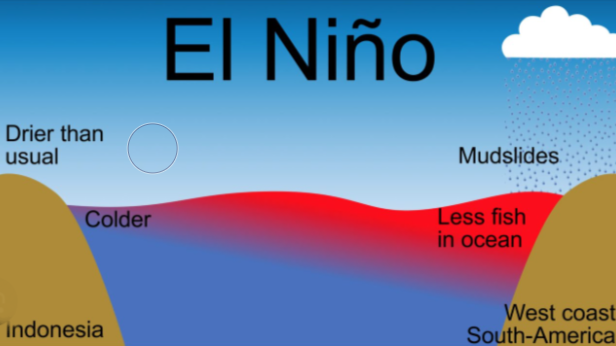The Greenhouse Effect: Shocking Facts About the Greenhouse Effect 1
The greenhouse effect is a natural process that plays a critical role in regulating Earth’s temperature. Without it, our planet would be too cold to support life as we know it. However, human activities have intensified this effect, leading to global warming and climate change. In this article, we’ll explore how the greenhouse effect works, its significance, and the consequences of its rapid intensification due to human actions.
What Is the Greenhouse Effect?
The greenhouse effect occurs when certain gases in Earth’s atmosphere trap heat from the Sun. These gases, known as greenhouse gases, include carbon dioxide (CO2), methane (CH4), water vapor (H2O), nitrous oxide (N2O), and ozone (O3). They allow sunlight to enter the atmosphere and warm the Earth’s surface but prevent some of the heat from escaping back into space, creating a warming effect similar to a greenhouse.
The Earth’s surface absorbs solar radiation, warms up, and then emits this energy as infrared radiation (heat). Greenhouse gases absorb this heat and re-radiate it in all directions, including back towards the Earth’s surface, causing additional warming.

Natural vs. Enhanced Greenhouse Effect
The natural greenhouse effect is essential for life on Earth. It keeps the planet’s average temperature around 15°C (59°F), which is suitable for ecosystems, weather patterns, and life. Without it, Earth’s average temperature would be about -18°C (0°F), making it uninhabitable.
However, since the industrial revolution, human activities like burning fossil fuels (coal, oil, and natural gas), deforestation, and industrial processes have significantly increased the concentration of greenhouse gases, particularly CO2. This intensifies the greenhouse effect, leading to what is known as the “enhanced greenhouse effect.”
5 Shocking Facts About the Greenhouse Effect – #3 Will Change How You See Climate Change!
Causes of the Enhanced Greenhouse Effect
- Fossil Fuel Combustion: The burning of fossil fuels for energy is the largest source of CO2 emissions. Factories, power plants, vehicles, and airplanes all contribute to the increased levels of greenhouse gases.
- Deforestation: Trees absorb CO2 and release oxygen. When forests are cleared for agriculture or urban development, not only is CO2 absorption reduced, but the carbon stored in trees is released back into the atmosphere.
- Agriculture: Livestock farming produces methane, a potent greenhouse gas. Additionally, the use of synthetic fertilizers releases nitrous oxide, another contributor to global warming.
- Industrial Activities: The production of cement, steel, and other industrial materials releases large amounts of CO2 and other greenhouse gases into the atmosphere.
https://education.nationalgeographic.org/resource/greenhouse-effect/
Consequences of the Enhanced Greenhouse Effect
The rapid increase in greenhouse gases has far-reaching consequences, leading to climate change. Here are some of the key impacts:
- Global Warming: The average global temperature has increased by about 1.2°C (2.2°F) since the late 19th century, with the past few decades being the warmest on record. This rise in temperature affects ecosystems, weather patterns, and human life.
- Melting Ice and Rising Sea Levels: The warming of the Earth is causing polar ice caps and glaciers to melt, contributing to rising sea levels. This threatens coastal communities, leading to more frequent flooding and loss of land.
- Extreme Weather Events: The enhanced greenhouse effect leads to more extreme and unpredictable weather patterns, including heatwaves, heavy rainfall, hurricanes, and droughts. These events have devastating impacts on agriculture, infrastructure, and human health.
- Ocean Acidification: The oceans absorb about 30% of the CO2 released into the atmosphere. This leads to the acidification of ocean waters, which harms marine life, particularly coral reefs and shellfish.
- Ecosystem Disruption: As temperatures rise and weather patterns shift, ecosystems struggle to adapt. Species may migrate to new areas or face extinction, disrupting the balance of natural ecosystems.
Reducing the Greenhouse Effect
While the greenhouse effect is a natural phenomenon, the human-driven enhanced greenhouse effect can be mitigated through conscious actions. Some key measures include:
- Switching to Renewable Energy: Replacing fossil fuels with clean energy sources like solar, wind, and hydroelectric power can significantly reduce CO2 emissions.
- Energy Efficiency: Improving energy efficiency in homes, buildings, and transportation can reduce the amount of energy needed, which in turn reduces greenhouse gas emissions.
- Reforestation: Planting trees and preserving forests can help absorb CO2 from the atmosphere, acting as carbon sinks.
- Sustainable Agriculture: Reducing methane emissions from livestock farming and minimizing the use of synthetic fertilizers can limit agricultural contributions to greenhouse gases.
- Reducing Waste: Recycling, composting, and reducing overall consumption can minimize the emissions associated with waste disposal.
Conclusion
The greenhouse effect is a vital natural process that keeps Earth warm enough for life to thrive. However, human activities have amplified this effect, causing global warming and climate change. By understanding the causes and consequences of the enhanced greenhouse effect, we can take action to reduce greenhouse gas emissions and protect the planet for future generations.





2 thoughts on “The Greenhouse Effect: Shocking Facts About the Greenhouse Effect 1”